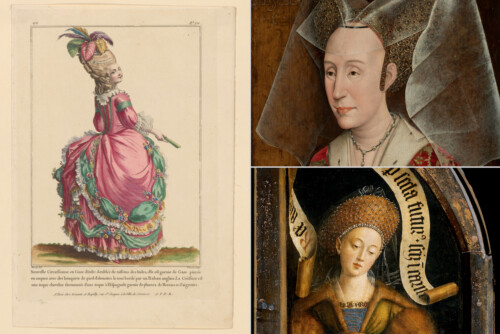Transnational commercial surrogacy in India is a small but growing industry attracting media attention as part of a larger popular interest in surrogacy in the U.S. and elsewhere. The doctors at the clinic in northern India where I did fieldwork in early 2008 were aware of a handful of other clinics in the Indian cities of Chennai, Mumbai, Hyderabad, and Ahmedabad. The path for this industry was paved by already-existing infrastructures of transportation and communication, discourses about outsourcing and the cheapness of Indian labor, and epistemologies of the body and kinship as they have been influenced by Western science and medicine. These conditions of possibility are interwoven with the continued development of biotechnologies of human reproduction in ways that increase the choices of those with access to these technologies. For women implicated in new technologies through the biological materials or labor they provide, for example through the roles of egg donor or gestational surrogate, advances in reproductive technologies can increase the range of income options while simultaneously compromising the desirability of these options. The enabling conditions for transnational surrogacy occur in a context of contested cultural domains, where multiple understandings of the significance and social meaning of reproductive technologies have to vie for traction. By tracing some of these understandings, this article considers how transnational Indian surrogacy reflects aspects of the privatization and commodification of reproduction and reproductive labor. This article also addresses how commercial surrogacy, in the eyes of some participants, operates within economies of altruism that re-signify the meaning of the act of surrogacy and the social relations it entails.
Scholarship on assisted reproduction in India suggests that for the middle class elites who can afford them, assisted reproductive technologies can reduce the social stigma for otherwise childless married women and help provide old-age security for couples who have been unable to have children in other ways. 1 There is evidence that the reach of these technologies is expanding, 2 but the economic constraints on women who become surrogate mothers means that women in their own social and economic strata are not candidates for the potential benefit of these technologies themselves, 3 and it therefore serves as another example of “stratified reproduction.” 4
In early 2008, I observed and interviewed doctors, lab technicians, clinic staff, commissioning parents who were in the process of having a child through a surrogate, and women working as surrogates at the Manushi fertility clinic in northern India. 5 In the tradition of medical anthropology, I approached the clinic as a contact zone where unique interactions and relationships occur, and these constitute the center of my study. In the tradition of both subaltern historiographies and feminist methodologies, I aim to point to possibilities in the subject positions of those from whom I learned during fieldwork without representing this knowledge as anything but a particular reading produced from my context as a scholar based in the U.S..
After outlining the surrogacy process at the Manushi clinic, I will look at how commercial surrogacy in India relies on a Western medical understanding of the body that constructs the uterus as surplus, and a genetics-based model of parentage that creates a connection between the intended parents and fetus, and a distance between the surrogate and the guest-fetus. I then look at discourses of altruism in the clinic that contain understandings of the act of surrogacy and the clinic’s surrogacy practice that exceed or supplant this medical discourse and the associated alienation and commodification of gestation. I look specifically at how the clinic portrays surrogacy as a form of social work, emphasizing the ways that fees paid to surrogates through the clinic materially improve their lives rather than serving only as wages and profit to the clinic, and the ways that the understanding of the divine nature of the act of surrogacy provides another narrative of the meaning and value of commercial surrogacy outside of market logic. I will conclude by briefly addressing what the co-existence of these different ways of making meaning about surrogacy suggest about the roles played by transnational Indian surrogacy and the fertility clinic in decolonizing and neoliberalizing contemporary India.
- Marcia C. Inhorn and Aditya Bharadwaj, “Reproductively Disabled Lives: Infertility, Stigma, and Suffering in Egypt and India,” in Disability in Local and Global Worlds, B. Ingstad and S.R. Whyte, eds. (Berkeley: University of California Press, 2007): 78-106.[↑]
- A. Bharadwaj, “How Some Indian Baby Makers are Made: Media Narratives and Assisted Conception in India,” Anthropology & Medicine (2000) 7: 63-78. [↑]
- Marcia C. Inhorn, R.Ceballa, and R. Nachtigall, “Marginalized, Invisible, and Unwanted: American Minority Struggles with Infertility and Assisted Conception,” in Marginalised Reproduction: Ethnicity, Infertility and Assisted Conception, N. Culley, N. Hudson, F. Van Rooij, eds. (London: Earthscan, 2008); Debora Spar, The Baby Business: How Money, Science, and Politics Drive the Commerce of Conception (Boston: Harvard Business School Press, 2006).[↑]
- S. Colen, “‘Like a Mother to Them:’ Stratified Reproduction and West Indian Childcare Workers and Employers in New York,” in Conceiving the New World Order: The Global Politics of Reproduction Faye Ginsburg, Rayna Rapp, eds. (Berkeley: University of California Press, 1995): 78-102.[↑]
- All identifying details of names and locations have been altered.[↑]



